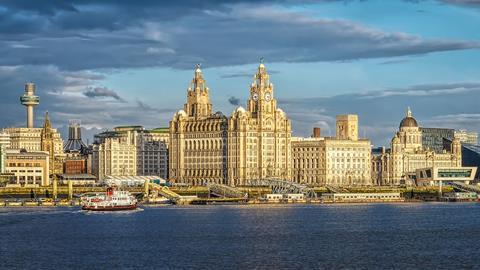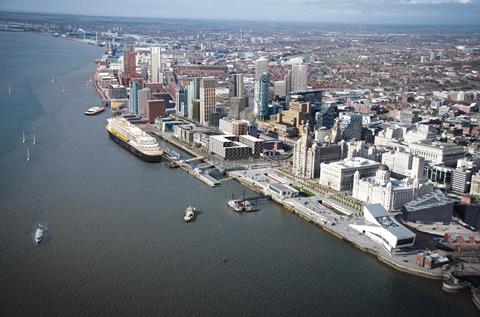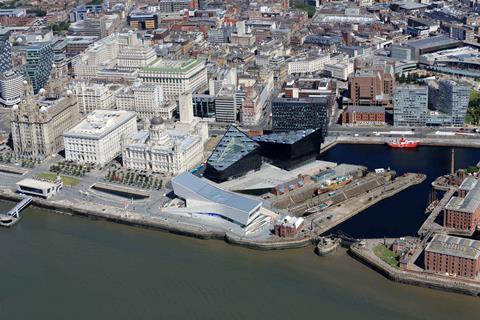Guidance says towers of up to 50 storeys could be approved – one year after high-rise boom cost city its Unesco status

Liverpool has published details of its proposed new guidance on tall buildings, one year after the city was stripped of its Unesco World Heritage Site status because of the impact of new development on its historic waterfront buildings.
The document, which will be put out to public consultation if the move is endorsed by members of the city council’s cabinet later this week, suggests residential towers of up to 50 storeys in height – or a maximum of 150m AOD – in some locations would be acceptable.
The figure is shorter than at least one of the Liverpool Waters blocks Peel Holdings has approval for at its £5bn development north of the city’s Pier Head, which is home to the “Three Graces”: the Cunard Building; the Royal Liver Building; and the Port of Liverpool Building. The Royal Liver Building is grade I-listed; the other two are grade II*.
The draft supplementary planning document suggests that the tallest new buildings should be located at the city centre cluster to the north of the Three Graces and that their height should drop to 20 storeys at the cluster’s edges. Peel has outline consent for a 58-storey tower in the zone as part of its Liverpool Waters approval.
For the designated Liverpool Waters cluster, which is further north, maximum tall building heights of 40 storeys or 81m AOD are proposed. Peel currently has outline consent for one tower of 47 storeys in the area.

A report accompanying the draft guidance said that a “key objective” was to ensure tall buildings were designed “carefully” and resulted in “high quality places where people want to live and spend their time”.
It added: “The SPD also seeks to ensure that tall buildings contribute to the regeneration of the city and deliver wider public benefits.”
However it also noted that a screening exercise had concluded that it was “unlikely” that the guidance would result in “significant effects” because the principle for development of tall buildings in the city had already been defined by Liverpool’s local plan.
Officers also conceded that there was a difference of opinion between the city council and government heritage adviser Historic England over whether a strategic environmental assessment was needed to accompany the new guidance.

“Historic England … are of the opinion that the SPD proposes sites/areas suitable for tall buildings which have not been tested through the local plan process and therefore consider that the Tall Buildings SPD will need an SEA due to the potential significant impacts on the historic environment,” they said.
Officers said they believed Historic England was wrong because the SPD only identified potential locations for new tall buildings and does not allocate sites for them.
The guidance was drawn up by Urban Initiatives Studio in conjunction with Arup and Chris Blandford Associates after Liverpool City Council agreed to spend up to £80,000 on outsourcing the document in 2018.
Unesco’s decision to strip Liverpool of its World Heritage Site status last year followed a protracted series of warnings over the course of a decade.
Announcing the decision, Unesco expressed “deep regret” that new developments around the listed waterfront had caused a “significant loss to its authenticity and integrity” and that the process of further deterioration was “irreversible”.
It said it was the result of “inadequate governance processes, mechanisms and regulations” for new developments, and that obligations to protect and conserve the site had not been fulfilled.
Cabinet members will discuss the new SPD at a meeting on Friday.



























No comments yet